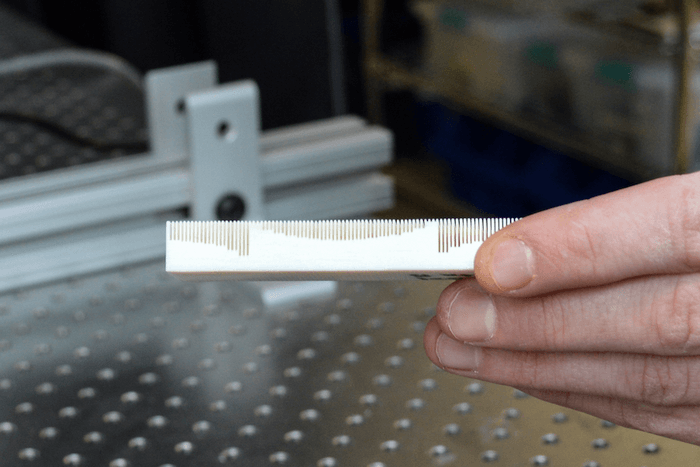MINNEAPOLIS — The COVID-19 pandemic forced many businesses to operate with minimal contact. While many people can now opt for contactless deliveries or use contactless payment options, consumers in the future could be able to actually move their items without ever touching them! Researchers from the University of Minnesota have created a new method for moving objects hands-free using ultrasound waves.
With more research, the novel approach could become a common sight in manufacturing and robotics industries where devices would not need a built-in power source to move.
Previous studies have shown that light and sound waves can manipulate objects. However, these objects needed to be smaller than the wavelength of sound or light. The current study expands on these findings with the new method capable of moving larger objects.
The method is based on principles of metamaterial physics. Metamaterials are designed to interact with waves like light and sound. When a metamaterial pattern is on the surface of an object, humans can use sound to move it in a specific direction without touching it at all.

“We have known for a while that waves and light and sound can manipulate objects. What sets our research apart is that we can manipulate and trap much bigger objects if we make their surface a metamaterial surface, or a ‘metasurface,’” says senior author Ognjen Ilic, an assistant professor in the department of mechanical engineering, in a university release. “When we place these tiny patterns on the surface of the objects, we can basically reflect the sound in any direction we want. And in doing that, we can control the acoustic force that is exerted on an object.”
Science fiction becomes reality
The device is similar to the technology seen in sci-fi shows such as “Star Trek.” Like the show’s tractor beam technology, the method can also pull objects toward a source.
“Contactless manipulation is a hot area of research in optics and electromagnetism, but this research proposes another method for contactless actuation that offers advantages that other methods may not have,” explains Matthew Stein, lead study author and graduate student at the University of Minnesota department of mechanical engineering. “Also, outside of the applications that this research enables, expanding upon our knowledge of physics is just a very exciting thing to do in general!”
The research team plans to refine the method with higher frequencies, allowing it to move different materials and object sizes one day.
“In a lot of fields of science and engineering, robotics especially, there is the need to move things, to transfer a signal into some sort of controlled motion,” says Ilic. “Often this is done through physical tethers or having to carry some source of energy to be able to perform a task. I think we’re charting in a new direction here and showing that without physical contact, we can move objects, and that motion can be controlled simply by programming what is on the surface of that object. This gives us a new mechanism to contactlessly actuate things.”
The study is published in the journal Nature Communications.

